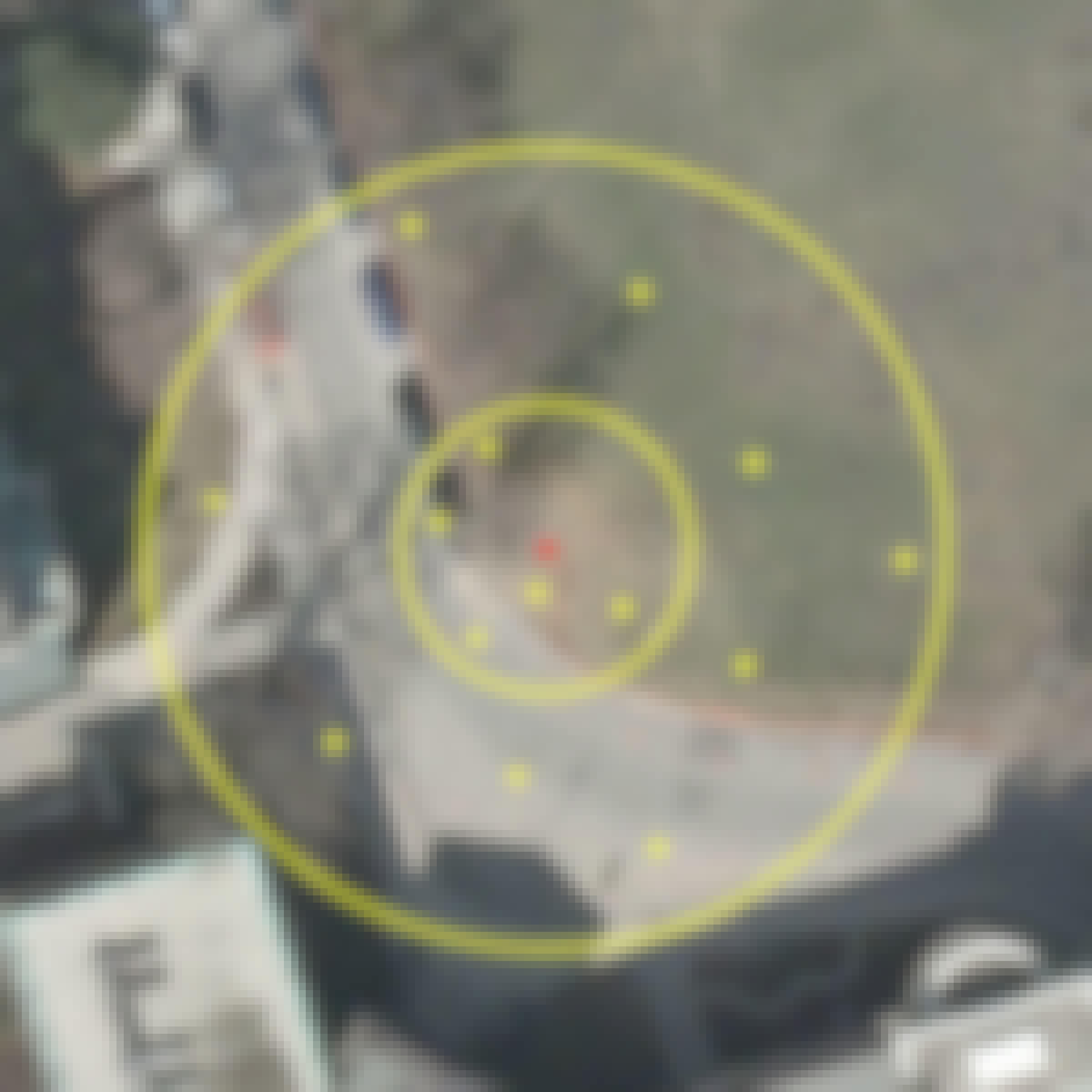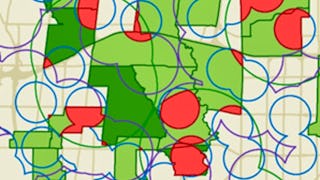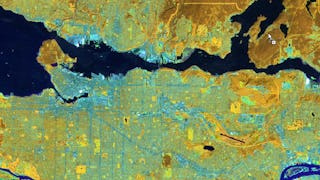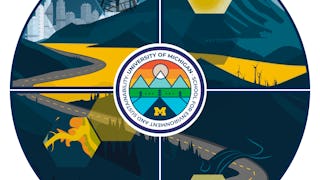Filter by
SubjectRequired
LanguageRequired
The language used throughout the course, in both instruction and assessments.
Learning ProductRequired
LevelRequired
DurationRequired
SkillsRequired
SubtitlesRequired
EducatorRequired
Explore the QGIS Course Catalog

University of Toronto
Skills you'll gain: Geographic Information Systems, Geospatial Mapping, Data Mapping, Spatial Data Analysis, Data Visualization, Metadata Management, Quantitative Research, Typography, Data Manipulation, Data Modeling, Design Elements And Principles

University of Toronto
Skills you'll gain: Spatial Analysis, Geographic Information Systems, Geospatial Mapping, ArcGIS, Data Visualization, Data Compilation, Data Mapping, Data Storytelling, Metadata Management, Data Integration, Data Management

University of Toronto
Skills you'll gain: Geographic Information Systems, GIS Software, Spatial Analysis, Spatial Data Analysis, Geospatial Mapping, Query Languages, Data Processing, Data Manipulation, Image Analysis, Data Integration
 Status: New
Status: NewUniversity of Michigan
Skills you'll gain: Geographic Information Systems, Geospatial Mapping, Spatial Data Analysis, Datamaps, Spatial Analysis, Data Storytelling, Environmental Monitoring, Heat Maps, Forecasting, Trend Analysis
 Status: Free
Status: FreeCoursera Instructor Network
Skills you'll gain: Geographic Information Systems, Geospatial Information and Technology, Geospatial Mapping, Spatial Data Analysis, Spatial Analysis, Global Positioning Systems
 Status: Free
Status: FreeÉcole Polytechnique Fédérale de Lausanne
Skills you'll gain: GIS Software, Spatial Analysis, Geographic Information Systems, Geospatial Mapping, Spatial Data Analysis, Augmented Reality, Data Mapping, Color Theory, Data Processing, Database Management

Skills you'll gain: Feature Engineering, Dimensionality Reduction, Data Integration, Exploratory Data Analysis, Data Visualization, Matlab, Data Processing, Descriptive Statistics, Data Cleansing, Data Manipulation, Histogram, Data Transformation, Text Mining, Predictive Modeling, Unstructured Data, Image Analysis, Natural Language Processing

L&T EduTech
Skills you'll gain: Geospatial Mapping, Geospatial Information and Technology, Geographic Information Systems, Construction, Construction Management, Architecture and Construction, Civil and Architectural Engineering, Spatial Analysis, Global Positioning Systems, GIS Software, As-Built Drawings, Survey Creation, Engineering, Scientific, and Technical Instruments, Data Import/Export
 Status: Free
Status: FreeThe Pennsylvania State University
Skills you'll gain: Geospatial Mapping, Geographic Information Systems, Systems Thinking, Design Thinking, Geospatial Information and Technology, Spatial Analysis, Community Development, Collaborative Software, Environment and Resource Management, Decision Support Systems, Creativity, Cultural Responsiveness

University of Illinois Urbana-Champaign
Skills you'll gain: Geospatial Information and Technology, Geographic Information Systems, Apache Hadoop, Spatial Data Analysis, Geospatial Mapping, Spatial Analysis, Big Data, Matplotlib, Data Processing, Computational Thinking, Distributed Computing, Data Manipulation

Banco Interamericano de Desarrollo
Skills you'll gain: Failure Analysis, Risk Analysis, Risk Modeling, Risk Management, Project Risk Management, Analysis, Disaster Recovery, Systems Analysis, Vulnerability Assessments, Simulation and Simulation Software, Qualitative Research
 Status: Free
Status: FreeCoursera Instructor Network
Skills you'll gain: Data Visualization, Data-Driven Decision-Making, Data Visualization Software, Data Literacy, Interactive Data Visualization, Business Intelligence, Data Storytelling, Data Presentation, Dashboard
In summary, here are 10 of our most popular qgis courses
- GIS Data Acquisition and Map Design: University of Toronto
- GIS, Mapping, and Spatial Analysis Capstone: University of Toronto
- Spatial Analysis and Satellite Imagery in a GIS: University of Toronto
- GIS: Geographic Information Systems for Sustainability: University of Michigan
- GIS Mastery: Spatial Data, Remote Sensing, Decision Support: Coursera Instructor Network
- Systèmes d’Information Géographique - Partie 2: École Polytechnique Fédérale de Lausanne
- Data Processing and Feature Engineering with MATLAB: MathWorks
- Geospatial Technology for Construction : L&T EduTech
- Geodesign: Change Your World: The Pennsylvania State University
- Getting Started with CyberGIS: University of Illinois Urbana-Champaign










